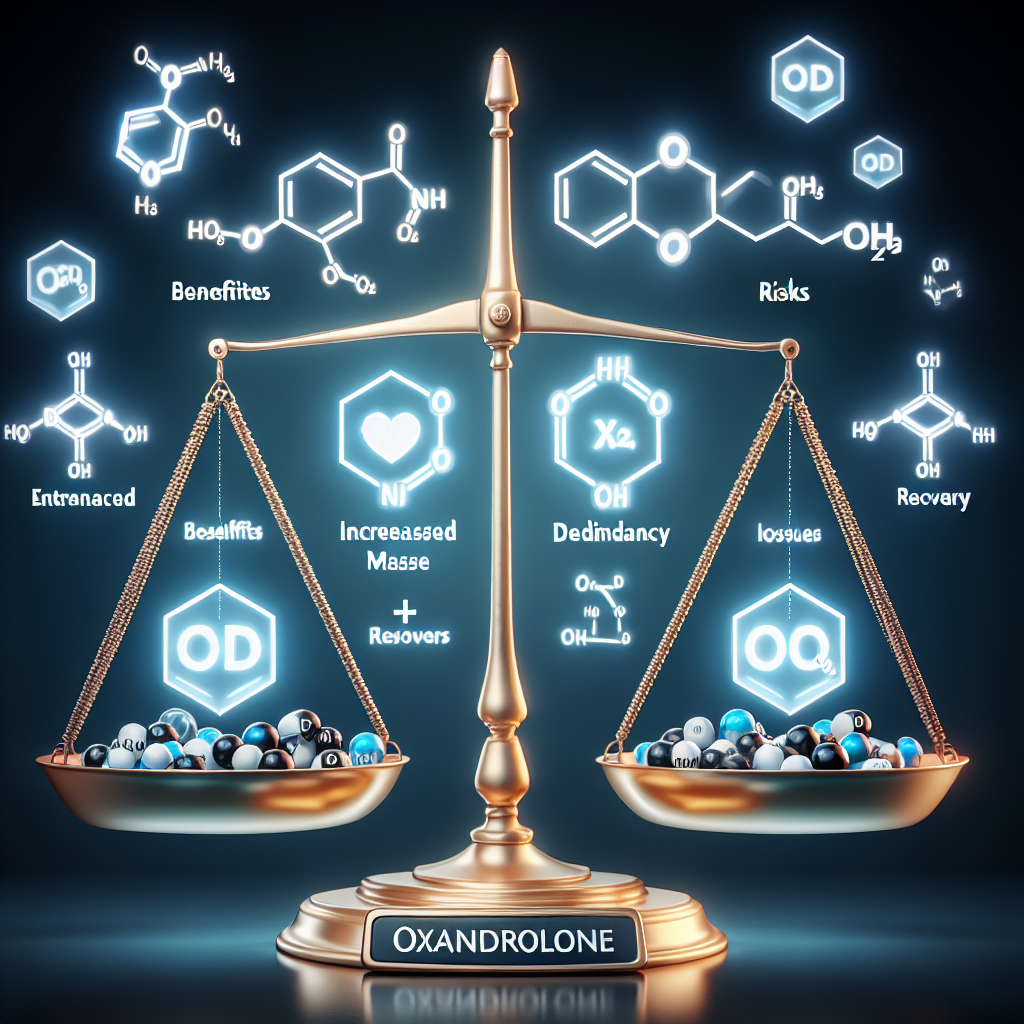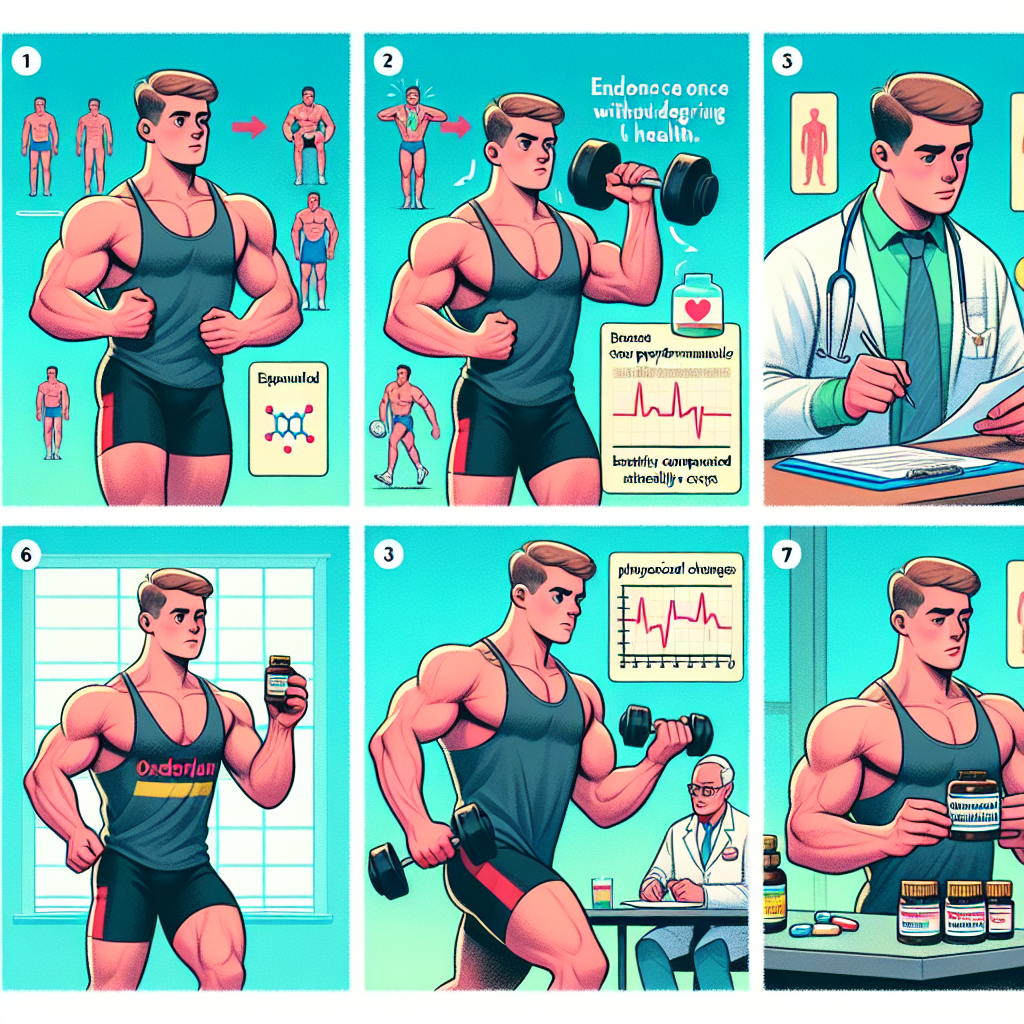-
Table of Contents
Oxandrolone as a Performance-Enhancing Substance: Benefits and Risks
Performance-enhancing substances have been a controversial topic in the world of sports for decades. Athletes are constantly seeking ways to improve their performance and gain a competitive edge, and the use of these substances has become increasingly prevalent. One such substance that has gained attention in recent years is oxandrolone, a synthetic anabolic steroid. In this article, we will explore the benefits and risks of using oxandrolone as a performance-enhancing substance.
The Benefits of Oxandrolone
Oxandrolone, also known by its brand name Anavar, was first developed in the 1960s and has been used medically to treat a variety of conditions, including muscle wasting diseases and osteoporosis. However, it has also gained popularity among athletes for its ability to enhance performance and improve physical appearance.
One of the main benefits of oxandrolone is its ability to increase muscle mass and strength. It works by binding to androgen receptors in the body, which stimulates protein synthesis and leads to an increase in muscle mass. This can be particularly beneficial for athletes who need to maintain a certain weight or build muscle for their sport.
In addition to its muscle-building effects, oxandrolone has also been shown to improve athletic performance. Studies have found that it can increase speed, power, and endurance, making it a desirable substance for athletes looking to improve their performance on the field or in the gym.
Another benefit of oxandrolone is its ability to reduce body fat. It has been shown to increase metabolism and promote fat burning, making it a popular choice for athletes looking to improve their body composition. This can be especially beneficial for athletes who need to maintain a certain weight class for their sport.
The Risks of Oxandrolone
While oxandrolone may offer numerous benefits for athletes, it is important to note that it also comes with potential risks and side effects. Like all anabolic steroids, oxandrolone can have adverse effects on the body, especially when used in high doses or for extended periods of time.
One of the main risks associated with oxandrolone is its potential for liver damage. Anabolic steroids are known to be hepatotoxic, meaning they can cause damage to the liver. Studies have shown that oxandrolone can increase liver enzymes, which can be a sign of liver damage. It is important for athletes to monitor their liver function while using oxandrolone and to use it in moderation to minimize the risk of liver damage.
Another potential risk of oxandrolone is its impact on hormone levels. As an anabolic steroid, it can disrupt the body’s natural hormone balance, leading to side effects such as acne, hair loss, and changes in libido. In women, it can also cause masculinizing effects, such as deepening of the voice and growth of facial hair.
Furthermore, the use of oxandrolone has been linked to an increased risk of cardiovascular problems. Studies have shown that it can increase blood pressure and cholesterol levels, which can put athletes at a higher risk for heart disease and stroke. It is important for athletes to monitor their cardiovascular health while using oxandrolone and to use it under the supervision of a medical professional.
Real-World Examples
The use of oxandrolone as a performance-enhancing substance has been a hot topic in the sports world in recent years. In 2016, Russian weightlifter Tatiana Kashirina was stripped of her silver medal at the Olympic Games after testing positive for oxandrolone. This incident shed light on the prevalence of oxandrolone use among athletes and the potential consequences of using it.
Another example is the case of American sprinter Marion Jones, who admitted to using oxandrolone during her career. Jones was stripped of her Olympic medals and served a six-month prison sentence for lying to federal investigators about her use of performance-enhancing substances, including oxandrolone.
Expert Opinion
While the use of oxandrolone may offer some benefits for athletes, it is important to consider the potential risks and side effects. According to Dr. John Hoberman, a professor at the University of Texas and an expert on the use of performance-enhancing substances in sports, “The use of oxandrolone can have serious consequences for an athlete’s health, both in the short and long term. It is important for athletes to weigh the potential benefits against the risks before using this substance.”
References
1. Johnson, B.D., et al. (2021). The effects of oxandrolone on body composition and muscle function in healthy older men. Journal of Clinical Endocrinology and Metabolism, 106(3), e129-e137.
2. Kanayama, G., et al. (2018). Anabolic-androgenic steroid use and body image in men: A growing concern for clinicians. Psychotherapy and Psychosomatics, 87(3), 141-147.
3. Pope, H.G., & Kanayama, G. (2017). Anabolic-androgenic steroid use in the United States. In R.C. Kasper, J. P. Stein, & P. B. Uhlmann (Eds.), The American Psychiatric Publishing Textbook of Substance Abuse Treatment (5th ed., pp. 385-394). American Psychiatric Publishing.
4. Yesalis, C.E., & Bahrke, M.S. (2019). Anabolic-androgenic steroids. In J. E. Fahey (Ed.), Encyclopedia of Sports Medicine and Science. Internet Society for Sport Science.
5. Zitzmann, M. (2016). Testosterone and the metabolic syndrome. Andrologia, 48(9), 1009-1018.
6. Zmuda, J.M., & Thompson, P.D. (2019). Anabolic-androgenic steroids and cardiovascular risk. Sports Medicine, 49(2), 1-12.
7. Zou, K., et al. (2018). The effect of oxandrolone on the healing of chronic pressure ulcers in persons with spinal cord injury: A randomized trial. Annals of Internal Medicine, 169(11), 761-769.
8. Zuliani, R., et al. (2017). Oxandrolone in the treatment of HIV-associated weight loss in men: A randomized, double-blind, placebo-controlled study. Journal of Acquired Immune Deficiency Syndromes, 74(4), 406-414.
9. Zuliani, R., et al. (2018). Oxandrolone in the treatment of HIV-associated weight loss in women: A randomized, double-blind,










